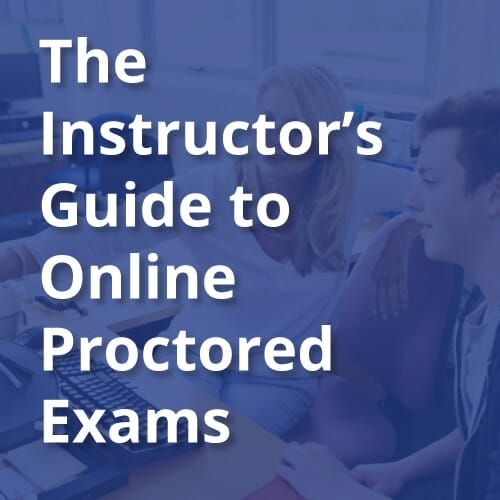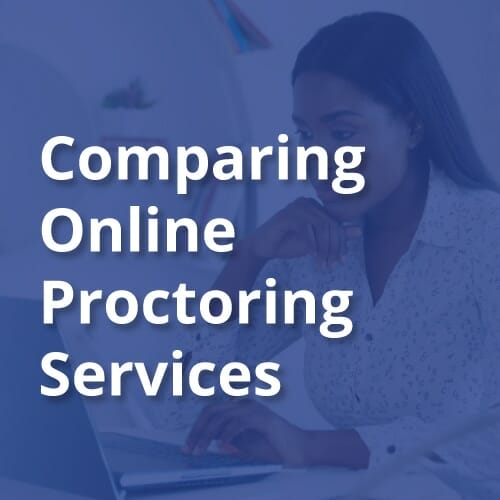Ever-evolving technology is continually changing the ways we live in and interact with the world, and education is no different. Today’s educators are tasked with charting the course forward, implementing the innovations that are beneficial and useful while avoiding those that aren’t.
With so many new online teaching solutions on the horizon, however, it can be difficult to determine the right next steps. After all, as an administrator, you are not merely choosing whether or not to use new technology at your school. Y
ou’re trying to parse out the options that will help your students learn best, allow you to offer education to the most people, and help your faculty streamline their processes so students can succeed—all while ensuring that everyone involved is aware of how new software works and assured that their data is secure while using it.
Everyone involved wants to know that these new teaching technology alternatives are just as effective as the systems they’re replacing, and no one wants to feel as though the human touch in education is disappearing altogether. Instead, they want access to technology that can extend their reach. But what does that technology look like?
Technology in the Classroom
Even when students are attending classes in person, educational technology is changing the way they learn. Especially in larger lecture courses, digital innovations help everyone’s voice be heard when an instructor asks a question, and it also gives instructors room for creativity in things as simple as taking attendance by having each student present answer a question from their own device.
It also allows instructors to more easily bring guest instructors into the classroom via videoconference, record lectures for students who may need to review later and create more engaging presentations of their content. Instructors have nearly endless opportunities to innovate thanks to new technology in the classroom.
Remote Education Innovations
Where educational tech shines, however, is in online education. Schools today know that, if they want to grow their programs, online education is key to their success. More students than ever before are looking for education that will fit into their lives—not the other way around. And online education lets them do exactly that.
From lectures to homework to classroom participation to exams, students can experience every piece of their education remotely. All they need to enroll in your program is a computer with internet access—a fairly low barrier to entry for most students.
The Challenges of Online Assessments
While this online learning technology can improve the student experience by making education accessible to more people than ever before, there can still be some stumbling blocks. For many schools, exams are the first one they run into. Can you ensure that remote assessments are as secure and accurate as in-person exams? After all, in the classroom, remote proctoring is the same as it’s always been.
Even with new devices and learning technology at students’ fingertips, the remote proctor’s job is virtually the same—ensure that students aren’t accessing external resources (whether on paper or on a screen). When the entire exam takes place online, remote proctoring becomes significantly more difficult. There are solutions, however.
Because staff and faculty can’t proctor exams for distance learners in person, they need tools to ensure that exams are being effectively administered. That typically means enlisting the assistance of an online proctoring service who can provide the innovative online teaching solutions your faculty needs to ensure academic integrity.
Solutions to the Online Proctoring Problem
In a world where most students have access to multiple devices—from smartphones and watches to external monitors and tablets—what does it look like to prevent academic dishonesty in distance learning? How can you choose an online proctoring solution that will effectively address your faculty’s concerns about testing integrity without compromising the student experience? How can you set students up for success by ensuring that they’re taking the proctored exam process seriously?
Here are a few ways an effective online proctoring solution can help:
- Browser Locking — As a baseline, any online proctoring system should give instructors the ability to secure the student’s browser to prevent them from accessing other tabs, windows, or external applications. By keeping students on the exam page, you can help them focus on their assessment and prevent them from attempting to access test answers.
- Printer Prevention — In order to help faculty protect their exam content, you’ll want to provide them with a system that prevents students from seeing the entire exam at once and blocks their ability to capture the data—whether by printing, copying and pasting, or taking a screenshot. This is especially important because, in an online proctoring context, students are taking exams at different times and so may be more motivated to try to share information with one another.
- Customizable Guidelines — Like in-person exams, instructors need the flexibility to set specific test rules and guidelines —whether it’s open-book or on a specific time limit. And, when they are able to set specific expectations, proctors are more easily able to ensure the security of the exam, only flagging students for behavior that is actually problematic.
- ID Verification — Online testing also creates the possibility for a student to enlist help by asking someone else to take their exam. Thanks to continued technical advancements, however, it’s easier than ever for online proctoring software to verify student identity prior to beginning the exam, ensuring that each student earns the grade they receive.
- Detecting Secondary Devices — This may be the stickiest question when it comes to exams—how can proctors ensure that students aren’t using their smartphones to access test information? Technology that helps proctors detect the use of additional devices and allows them to intervene to stop the behavior can go a long way toward helping you prevent dishonesty.
Online Proctoring to Improve Learning
Whether you’re ready to find out how online proctoring can help your program offer education to more students than ever before or are looking for a new, more technically advanced proctoring software, Honorlock can help. You want to offer your students the best possible education, and that includes secure tests with the right features to help you protect your program’s academic integrity.
Sign up below to receive more resources for tips, best practices, white papers, and industry trends
Want to see Honorlock in action? Schedule a demo.



